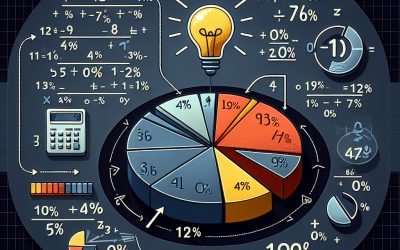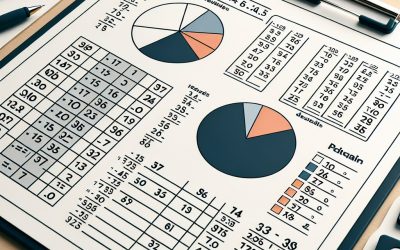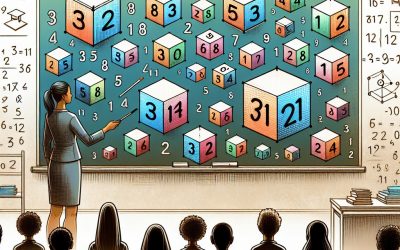➕ Introduction to Mathematics
The Language of Patterns, Logic, and Problem-Solving
Mathematics is the science of numbers, shapes, patterns, and relationships. It provides a universal language to describe the world around us—whether we’re counting, measuring, predicting, or solving complex problems. More than just calculations, maths is a way of thinking: logical, precise, and creative.
At its core, mathematics explores questions like:
-
How do we measure and compare things?
-
What happens when we follow certain rules or operations?
-
How can we predict outcomes or analyse patterns?
-
What structures exist beneath the surface of reality?
Maths is used in every area of life—from calculating a grocery bill to designing bridges, forecasting the weather, or sending spacecraft to Mars. It’s essential in science, engineering, technology, economics, architecture, and even music and art.
Divided into fields such as arithmetic, algebra, geometry, statistics, and calculus, mathematics grows more powerful as we explore deeper concepts. And it’s not just about finding the right answer—it’s about understanding why it’s right, and discovering new ways to think.
Studying maths sharpens our ability to reason, solve problems, and recognise the hidden patterns that shape our world.
Percentages
Percentages are a fundamental concept in mathematics and play a crucial role in our everyday lives. Whether we are calculating discounts at the store, analysing data, or making financial decisions, percentages are used to express proportions and make comparisons. Summary Percentages are a way of expressing a portion of a whole as a fraction of 100. To calculate a percentage, divide the part by the whole and multiply by 100. Percentages are used in everyday life, from calculating discounts to understanding election results. In business, percentages can be used to track sales growth, profit margins, and market share. To convert a fraction to a percentage, multiply by 100 and add a percentage sign. Understanding Percentages: A Beginner’s Guide Percentages are a way of expressing a proportion or a part of a whole as a fraction of 100. For example, if we say that 50% of the students in a class are girls, it means that 50 out of every 100 students are girls. Percentages are used in various aspects of our everyday lives. For instance, when we see a sale sign that says “50% off,” it means that the price has been reduced by half. Similarly, when we see weather forecasts that say there is a 30% chance of rain, it means that out of every 100 days with similar conditions, it is expected to rain on 30 of those days. Percentages can also be understood in relation to fractions and decimals. A percentage can be converted into a fraction by dividing it by 100 and simplifying the resulting fraction. For example, 25% can be written as 25/100,...
Equivalent Fractions and Decimal Numbers
Equivalent fractions and decimal numbers are fundamental concepts in mathematics that are essential for understanding and solving various mathematical problems. Equivalent fractions are fractions that represent the same value, but have different numerators and denominators. Decimal numbers, on the other hand, are a way of representing fractions or parts of a whole using the base-10 numbering system. Understanding equivalent fractions and decimal numbers is crucial for performing operations such as addition, subtraction, multiplication, and division, as well as for comparing and simplifying fractions and decimal numbers. Summary Equivalent fractions have the same value but different numerators and denominators. Decimal numbers are a way of representing fractions as a whole number and a decimal fraction. To convert a fraction to a decimal, divide the numerator by the denominator. Simplifying a fraction means dividing both the numerator and denominator by their greatest common factor. Comparing fractions and decimals requires converting them to a common form. Understanding Equivalent Fractions and Decimal Numbers Equivalent fractions are fractions that have different numerators and denominators but represent the same value. For example, 1/2 and 2/4 are equivalent fractions because they both represent half of a whole. Similarly, decimal numbers are a way of representing fractions or parts of a whole using the base-10 numbering system. For example, 0.5 is equivalent to 1/2 because they both represent half of a whole. How to Convert Fractions to Decimal Numbers Converting fractions to decimal numbers involves dividing the numerator by the denominator. To convert a fraction to a decimal number, follow these steps:1. Divide the numerator by the denominator.2. If the division is exact, the result is a...
Dividing Fractions
Dividing fractions is an essential concept in mathematics that involves dividing one fraction by another. It is important to understand this concept as it is used in various real-life situations, such as cooking, construction, and finance. Dividing fractions allows us to divide quantities that are represented by fractions and helps us solve problems involving proportions and ratios. Summary Dividing fractions means finding out how many parts of one fraction fit into another fraction. To divide fractions, you need to flip the second fraction and multiply it by the first fraction. When dividing fractions with like denominators, you simply divide the numerators. When dividing fractions with unlike denominators, you need to find a common denominator first. Simplifying fractions before dividing can make the process easier and the answer more accurate. Basic rules for dividing fractions Before diving into the process of dividing fractions, it is important to remember the reciprocal rule. The reciprocal of a fraction is obtained by swapping the numerator and denominator. For example, the reciprocal of 2/3 is 3/2. To divide fractions, we multiply the first fraction by the reciprocal of the second fraction. This can be represented as: a/b ÷ c/d = a/b * d/c Dividing fractions with like denominators When dividing fractions with the same denominator, the process becomes relatively simple. To divide fractions with like denominators, follow these steps: 1. Keep the first fraction as it is.2. Change the division sign to a multiplication sign.3. Take the reciprocal of the second fraction.4. Multiply the two fractions. For example, let’s divide 2/5 by 3/5: 2/5 ÷ 3/5 = 2/5 * 5/3 = (2*5)/(5*3) = 10/15...
Subtracting Fractions
Understanding how to subtract fractions is an essential skill in mathematics. Whether you are a student learning the basics or an adult needing to use fractions in everyday life, knowing how to subtract fractions is crucial. In this blog post, we will cover the basics of subtracting fractions, including finding a common denominator, simplifying fractions, subtracting fractions with like and unlike denominators, using mixed numbers, subtracting fractions with whole numbers, applying subtraction of fractions in real-life situations, common mistakes to avoid, and practice exercises and worksheets. Summary Subtracting fractions involves finding the difference between two fractions. To subtract fractions, you need to have a common denominator. Simplifying fractions before subtracting them can make the process easier. When subtracting fractions with like denominators, simply subtract the numerators and keep the denominator the same. When subtracting fractions with unlike denominators, you need to find a common denominator before subtracting. Understanding the Basics of Subtracting Fractions Before diving into the specifics of subtracting fractions, it is important to understand the basic concepts of fractions and subtraction. A fraction represents a part of a whole or a division of a quantity into equal parts. It consists of a numerator (the number above the line) and a denominator (the number below the line). Subtraction is the process of finding the difference between two numbers. To subtract fractions, you need to have fractions with the same denominator. If the denominators are different, you will need to find a common denominator before subtracting. The result of subtracting two fractions will be another fraction. Finding a Common Denominator for Subtracting Fractions A common denominator is a shared...
Adding Fractions
Understanding fraction addition is a fundamental skill in mathematics that is essential for everyday life. Whether it’s dividing a pizza among friends or calculating the amount of ingredients needed for a recipe, fractions are everywhere. In this article, we will explore the basics of fraction addition and delve into various subtopics to help you gain a comprehensive understanding of this important concept. Summary Understanding the basics of fraction addition is crucial for solving more complex problems. Adding fractions with like denominators is simple and involves adding the numerators and keeping the denominator the same. Adding fractions with unlike denominators requires finding a common denominator before adding the numerators. Simplifying fractions before addition can make the process easier and the answer more precise. Adding mixed numbers with fractions involves converting the mixed number to an improper fraction before adding. Understanding the Basics of Fraction Addition Before we dive into the different methods of adding fractions, let’s start with the basics. A fraction is a way of representing a part of a whole or a division of a quantity. It consists of two parts: the numerator and the denominator. The numerator represents the number of parts we have, while the denominator represents the total number of equal parts that make up the whole. When we add fractions, we are essentially combining two or more parts to form a new whole. The first step in adding fractions is to ensure that they have a common denominator. The denominator is the bottom number in a fraction and represents the total number of equal parts in the whole. Adding fractions with different denominators can...
Multiplying Fractions
Fractions are a fundamental concept in mathematics that represent a part of a whole. They are expressed as a ratio of two numbers, with the numerator representing the number of parts and the denominator representing the total number of equal parts. Multiplying fractions is an essential skill that allows us to calculate the product of two or more fractions. It is an important concept in various fields such as engineering, science, and finance. Summary Multiplying fractions involves multiplying the numerators and denominators separately. When multiplying fractions with like denominators, simply multiply the numerators and keep the denominator the same. To multiply fractions with unlike denominators, find a common denominator and convert each fraction before multiplying. Simplify the multiplication of fractions by cancelling out common factors in the numerators and denominators. To multiply mixed numbers, convert them to improper fractions and follow the same steps as multiplying fractions. Multiplying Fractions with Like Denominators Like denominators refer to fractions that have the same number in their denominators. When multiplying fractions with like denominators, we simply multiply the numerators together and keep the denominator the same. For example, if we have 2/5 multiplied by 3/5, we multiply 2 by 3 to get 6 as the numerator and keep the denominator as 5. The resulting fraction is 6/5. Multiplying Fractions with Unlike Denominators Unlike denominators refer to fractions that have different numbers in their denominators. To multiply fractions with unlike denominators, we need to find a common denominator. This can be done by finding the least common multiple (LCM) of the two denominators. Once we have a common denominator, we can multiply the...
Comparing Fractions
Understanding fractions is an essential skill in mathematics. Fractions are used in various real-world situations, such as cooking, measuring, and budgeting. Being able to compare fractions is particularly important as it allows us to determine which fraction is larger or smaller. In this article, we will explore the basics of fractions, different methods for comparing fractions, and real-world applications of comparing fractions. Summary Fractions represent parts of a whole or a group. When comparing fractions with the same denominator, the larger fraction is the one with the greater numerator. When comparing fractions with the same numerator, the larger fraction is the one with the smaller denominator. To compare fractions with different denominators, find a common denominator and convert the fractions to that denominator. Equivalent fractions have the same value and can be used to compare fractions. Understanding the Basics of Fractions A fraction is a way of representing a part of a whole. It consists of two parts: the numerator and the denominator. The numerator represents the number of parts we have, while the denominator represents the total number of equal parts that make up a whole. For example, in the fraction 3/4, 3 is the numerator and 4 is the denominator. Fractions can be represented visually using a fraction bar or a pie chart. The numerator is written above the fraction bar, and the denominator is written below it. For example, 3/4 can be represented as three parts out of four equal parts. Comparing Fractions with the Same Denominator When comparing fractions with the same denominator, we can simply compare their numerators. The fraction with the larger numerator...
Mixed Numbers and Improper Fractions
Mixed numbers and improper fractions are important concepts in mathematics that are used in various calculations and real-life situations. Understanding and working with them is crucial for solving problems involving fractions and for building a strong foundation in mathematics. Summary Mixed numbers are a combination of a whole number and a fraction. Improper fractions have a numerator that is greater than or equal to the denominator. To convert a mixed number to an improper fraction, multiply the whole number by the denominator and add the numerator. To convert an improper fraction to a mixed number, divide the numerator by the denominator and write the remainder as the numerator of the fraction. When adding or subtracting mixed numbers or improper fractions, it is important to find a common denominator first. Understanding Mixed Numbers and Improper Fractions A mixed number is a combination of a whole number and a proper fraction. It is written in the form of a whole number followed by a fraction, such as 3 1/2 or 4 3/4. The whole number represents the number of whole units, while the fraction represents the remaining part. On the other hand, an improper fraction is a fraction where the numerator is equal to or greater than the denominator. It does not have a whole number component. Examples of improper fractions include 5/3 or 7/2. Converting Mixed Numbers to Improper Fractions Converting mixed numbers to improper fractions involves multiplying the whole number by the denominator of the fraction, adding the numerator, and placing the result over the denominator. For example, to convert 3 1/2 to an improper fraction:Step 1: Multiply the...
Equivalent Fractions
Equivalent fractions are fractions that represent the same value, even though they may look different. In other words, they have different numerators and denominators, but they still represent the same amount or quantity. Understanding equivalent fractions is crucial in mathematics as it helps in simplifying fractions, comparing and ordering fractions, and solving various mathematical problems. Summary Equivalent fractions are fractions that represent the same value, but have different numerators and denominators. To find equivalent fractions, you can multiply or divide both the numerator and denominator by the same number. Simplifying fractions involves dividing both the numerator and denominator by their greatest common factor. Multiplying or dividing fractions by the same number will result in equivalent fractions. Common denominators can be used to find equivalent fractions by making sure the denominators are the same. Understanding the Concept of Equivalent Fractions To understand how fractions can be equivalent, let’s take an example. Consider the fractions 1/2 and 2/4. Although these fractions have different numerators and denominators, they represent the same value. This is because if we divide a whole into two equal parts, one part is equal to 1/2. Similarly, if we divide a whole into four equal parts, two parts are equal to 2/4. Therefore, 1/2 and 2/4 are equivalent fractions. Methods of Finding Equivalent Fractions There are several methods to find equivalent fractions: 1. Multiplying or dividing both the numerator and denominator by the same number: By multiplying or dividing both the numerator and denominator of a fraction by the same number, we can find an equivalent fraction. For example, if we multiply both the numerator and denominator of...
Fractions
Fractions are an essential part of mathematics and are used to represent parts of a whole or a group. A fraction consists of two parts: the numerator and the denominator. The numerator represents the number of parts we have, while the denominator represents the total number of equal parts that make up a whole or a group. To read a fraction, we say the numerator first and then the denominator. For example, 3/4 is read as “three-fourths” or “three over four.” To write a fraction, we use a horizontal line called a fraction bar or a forward slash (/) to separate the numerator and denominator. Summary Fractions represent parts of a whole or a group of objects. Proper fractions have a numerator smaller than the denominator, while improper fractions have a numerator larger than the denominator. To simplify fractions, divide both the numerator and denominator by their greatest common factor. To add or subtract fractions, find the common denominator and adjust the numerators accordingly. To multiply fractions, multiply the numerators and denominators separately and simplify if possible. Types of Fractions: Proper, Improper, and Mixed Fractions There are three main types of fractions: proper fractions, improper fractions, and mixed fractions. A proper fraction is a fraction where the numerator is smaller than the denominator. For example, 1/2 and 3/4 are proper fractions. These fractions represent parts of a whole or a group that are less than one whole. An improper fraction is a fraction where the numerator is equal to or greater than the denominator. For example, 5/4 and 7/3 are improper fractions. These fractions represent parts of a whole...
Using Calculators
Calculators have come a long way since the invention of the abacus thousands of years ago. The abacus, which was used by ancient civilizations such as the Egyptians and the Chinese, was a simple device that allowed users to perform basic arithmetic calculations. Over time, calculators evolved and became more sophisticated, eventually leading to the modern-day calculators we use today. The first mechanical calculator, known as the Pascaline, was invented by Blaise Pascal in the 17th century. This device used gears and wheels to perform addition and subtraction. In the 19th century, Charles Babbage developed the Analytical Engine, which was considered to be the first general-purpose computer. It had the ability to perform complex calculations using punched cards. The invention of electronic calculators in the mid-20th century revolutionized the field of mathematics and science. These calculators used transistors and integrated circuits to perform calculations quickly and accurately. They were smaller, more portable, and more powerful than their mechanical counterparts. Today, calculators are an essential tool in various fields such as mathematics, science, engineering, finance, and everyday life. They have made complex calculations easier and more accessible to everyone. Summary Calculators have a long history, dating back to the abacus in ancient times. Basic functions of a calculator include addition, subtraction, multiplication, and division. When choosing a calculator, consider factors such as the type of calculations you will be doing and the size and functionality of the calculator. To maximize your calculator’s potential, learn shortcuts and functions such as memory and percentage calculations. Common errors to avoid when using a calculator include inputting the wrong numbers and forgetting to clear...
Square and Cube Numbers
Square and cube numbers are important concepts in mathematics that are used in various fields such as geometry, physics, and computer science. Understanding these numbers is crucial for solving mathematical problems and for practical applications in real life. Square numbers are numbers that are obtained by multiplying a number by itself. For example, 3 multiplied by 3 equals 9, so 9 is a square number. Cube numbers, on the other hand, are obtained by multiplying a number by itself twice. For example, 2 multiplied by 2 multiplied by 2 equals 8, so 8 is a cube number. Understanding square and cube numbers is important because they have many applications in different areas of study. They are used in geometry to calculate areas and volumes, in physics to describe the motion of objects, and in computer science for various calculations and algorithms. By understanding these numbers, we can better comprehend the world around us and solve complex problems. Summary Square numbers are the result of multiplying a number by itself. Square numbers have properties such as being odd or even and ending in specific digits. Examples of square numbers include 4, 9, and 16. Square numbers have applications in real life such as in measuring area and calculating distances. Cube numbers are the result of multiplying a number by itself three times. Cube numbers have properties such as being odd or even and ending in specific digits. Examples of cube numbers include 8, 27, and 64. Cube numbers have applications in real life such as in measuring volume and calculating the dimensions of objects. The main difference between square and...









